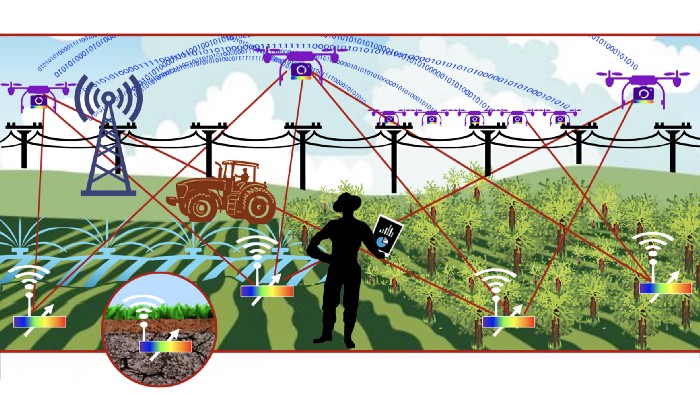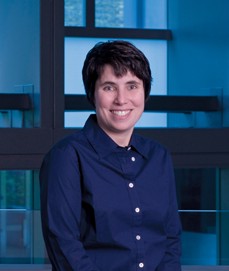
The National Science Foundation, through a 5-year, $26 million grant, has established the NSF Engineering Research Center for the Internet of Things for Precision Agriculture (IoT4Ag), headquartered at the University of Pennsylvania’s School of Engineering and Applied Science.
Engineering Research Centers (ERCs) are NSF’s flagship engineering program for convergent research to address large-scale societal challenges. The IoT4Ag Center aims to address food, energy and water security through advanced agricultural technologies.
Starting in the soil and reaching into the digital cloud, these technologies will collect, share and analyze data in order to improve farming practices, maximizing a farm’s productivity while minimizing its waste and ecological impact.
Center researchers will create miniature soil-based sensors and swarms of aerial and ground-based robots, as well as new ways of networking them together in communication-constrained environments. The researchers will also develop high-level data science techniques that will allow data from different sensors in the field to be integrated with data from weather reports and commodity markets, synthesizing it into actionable information.
Part of the ERC mandate is to converge a wide range of academic disciplines in tackling these challenges; another is to develop a diverse and inclusive workforce from across the United States. By partnering with industry and a broad community of students, faculty and professionals, the IoT4Ag Center will create an innovation ecosystem to continue these efforts into the coming decades.

Cherie Kagan, Stephen J. Angello Professor in Penn Engineering’s departments of Electrical and Systems Engineering and Materials Science and Engineering, is the IoT4Ag Center’s director and principal investigator. She will lead a team of more than two dozen researchers across Penn Engineering, Purdue University, University of California Merced, and the University of Florida.
“We need new technology to meet the challenges of a world with a growing population and changing climate,” Kagan says. “We simply need to produce more crops for every drop of water or Joule of energy we’re currently using to realize a food, energy and water-secure future.”
The IoT4Ag Center is divided into three integrated thrusts, with teams of researchers working on sensing, communication/energy and response technologies.
Members of the “Agricultural Sensor Systems” team will develop miniature sensors designed to be planted alongside crops or placed on top of the soil. These sensors will be considerably less expensive than current systems for monitoring micronutrients and other soil conditions, but be sowed like seeds and even provide data on the scale of an individual plant. They will also develop fleets of robots that will gather data from the air or ground; autonomously monitoring the health of plants with a suite of data-rich sensors, predicting crop yield and quality of produce.
Forming a network out of this diverse suite of sensors presents its own challenges, especially in the unique environment of a farm. Signals will need to travel from below the soil surface, to farm equipment, and from there to the cloud, and do so over long distances in remote locations with no pre-existing cellular networks to rely upon. Members of the “Communication and Energy Systems” team will develop methods for establishing and maintaining these lines of communication, along with energy technologies to keep sensors and robots running with minimal human interaction.
Finally, members of the “Agricultural Response Systems” team will develop models that will integrate data from a farm’s network of sensors with that from the wider world. By providing situational awareness informed by plant physiology, weather patterns, socioeconomic trends and evolving agricultural techniques, farmers will be able to implement measures targeted at the performance of individual crops.
Collectively, the IoT4Ag Center will also create a diverse talent pipeline consisting of K–12 and university students, engineers, agriculture professionals and other members of farming communities through audience-specific lessons and hands-on classroom, laboratory and field activities. Bringing together academic, government and industry partners with the farming community, the Center will create an innovation ecosystem that ensures the rapid translation of IoT4Ag practices and technologies into commercial products, and will also ensure that such a transformation is built with sustainable positive economic and social impact in mind.
“For the last 35 years, engineering research centers have helped shape science and technology in the United States by fostering innovation and collaboration among industry, universities and government agencies,“ said NSF Director Dr. Sethuraman Panchanathan. “As we kick off a new generation of centers, NSF will continue to work with its partners to ensure the success of these collaborative enterprises and the transformative, convergent research impact they produce.”
